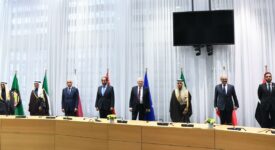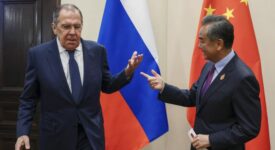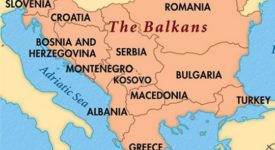A popular opinion of the Middle East and North African from a geopolitical perspective is that it is a region with great many internal divisions. However, as the Saudi King’s recent unprecedented visit to Moscow indicated, most regional players prefer to hedge their bets and balance the existing relationships, thus avoiding relying on one single power. There are two main reasons for this.
First, there are many different divisions in the region: Sunni versus Shia, Arabs versus non-Arabs, Islamists versus secularists, pro- versus anti-Western camps. Some regional powers play the desired card when it suits them. Yet, leaders, governments and political groups repeatedly team up with temporary allies on specific issues. For example, Ankara works with Washington to back Syrian opposition forces but teams up with Iran on the Kurdish issue. Israel has secretly coordinated common approach with some Arab countries on Iran and the Muslim Brotherhood. Saudi Arabia, Iran’s archrival, has reached out to Tehran this year to fight Qatar, a fellow Sunni Muslim country.
Second, hedging bets is a result of uncertainty over the future US involvement in the region. There is a widespread feeling in the region that the United States will eventually wind down its long-term security presence in the region. Yet, no another power is thought to replace it easily. Russia, China and India may play a greater role but none of them is on track to match the security environment currently dominated by the US. Instead, regional governments are likely to replace their heavy investment in one major foreign ally with a portfolio approach to partnerships, which will give them a bargaining power.
Even if Washington does not in fact intend to reduce its military presence in the region, it is always a good idea for the regional powers to have more international partners who can cooperate with on a host of different issues. New partners that do not emphasize human rights as much as the United States does would be desirable from the point of view of some regional players.
This strategy of seeking new allies has been in motion for some time. Vladimir Putin became the first Russian president to visit Saudi Arabia already ten years ago. A year before that, the then-Saudi King Abdullah made sure that his first foreign trip as king was to China and India, not the US or UK, to reflect the changing dynamic of international relations, trade, and energy flows.
However, none of this means that Riyadh is changing sides. What is sure though is that Russia and Saudi Arabia are intensifying their cooperation in energy and joint investment projects and possibly also arms. Both countries are also trying to accommodate each other in Syria where Riyadh hopes that Russia’s alliance with the regime will at least prevent Assad from being entirely dependent on Iran.
‘Saudi Visit to Moscow Underscores the Middle East’s Flexible Alliances’ – Expert Comment by Jane Kinninmont – Chatham House / The Royal Institute of International Affairs.







